Full of luscious chunks of sweet summer apricots, this two-ingredient recipe is easy, utterly delicious, and serves up beautifully on so much more than toast.
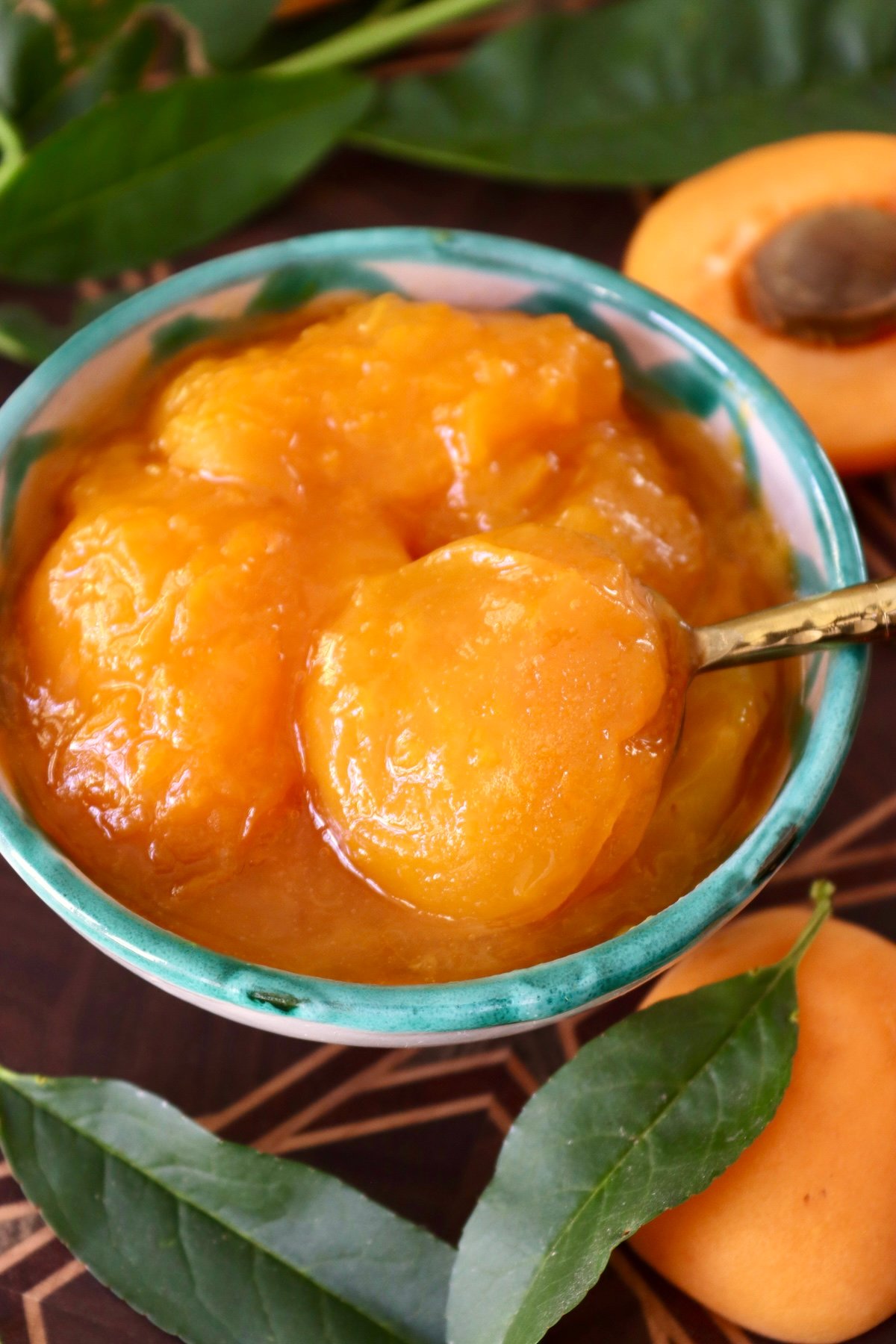
My life-long friend Aimée is connected to some of my best food memories -- from Roasted Poblano Salsa to the Ultimate Stuffed Artichoke, and most notably, her grandmother Peggy's apricot preserves.
During apricot season (approximately late May through July), you could always find a jar of Peggy's preserves at Aimées house. I had never had preserves like hers -- it was full of big and soft whole pieces of fruit and surrounded by a thick gelled base.
Never mind a piece of toast, I'd just dig into the jar with a spoon.(Aimée's family probably should've been hiding it from me, but I'm grateful they didn't.)
This is the easiest recipe! Aside from water, just two ingredients and some time on the stove. That's it.
Choosing Apricots for Preserves
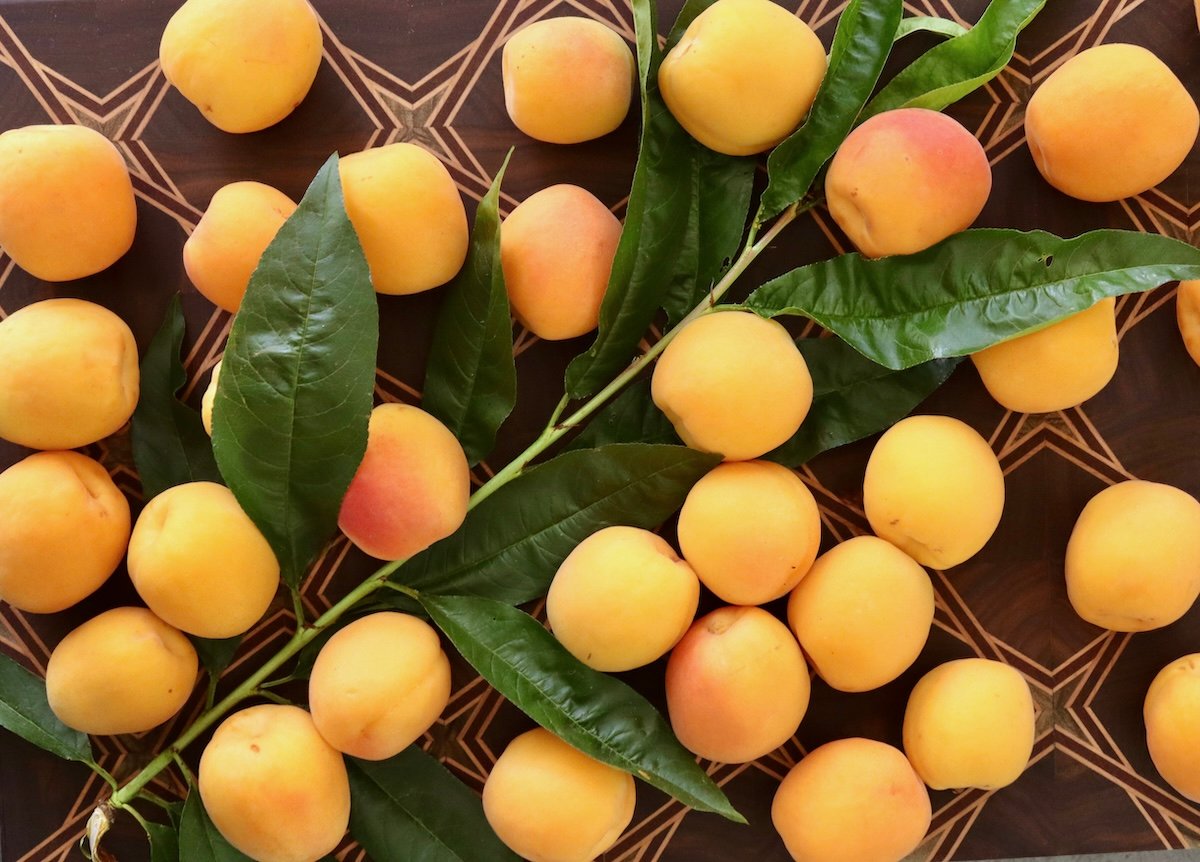
- Apricots for making preserves should be ripe, though still firm -- they should yield slightly to gentle pressure.
- Do not choose those that are soft or mushy. The softer the fruit, the less pectin it contains — and pectin is one of the main things that helps preserves and jams hold together.
- Avoid apricots with green, as this is an indication that they're under-ripe.
- The apricots should be a rich golden-orange or yellow color, often with a reddish hue in areas.
How to Make it
- Gently wash the apricots.
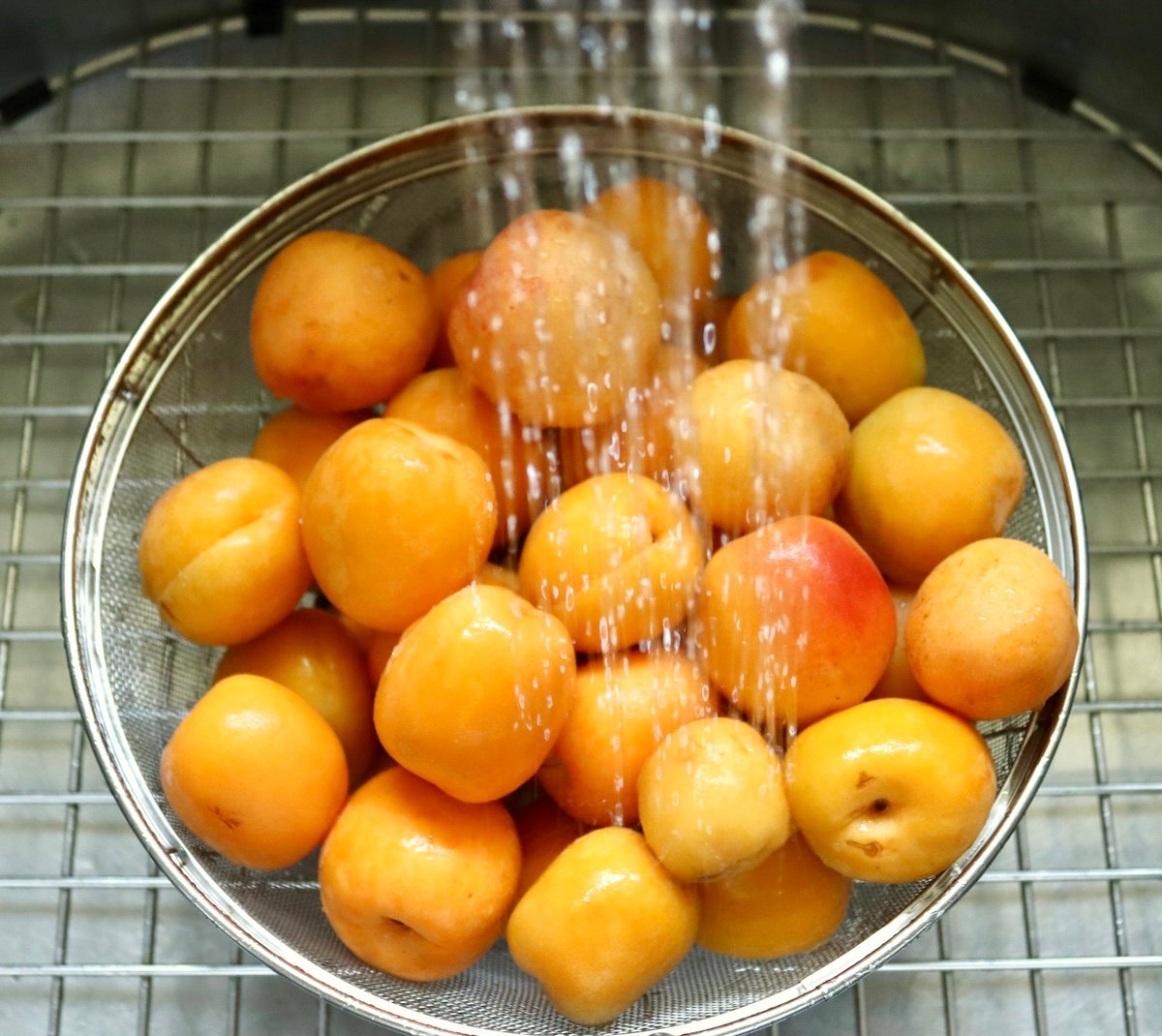
- Slice the apricots in half and remove the pits. You don't need to dry them first.
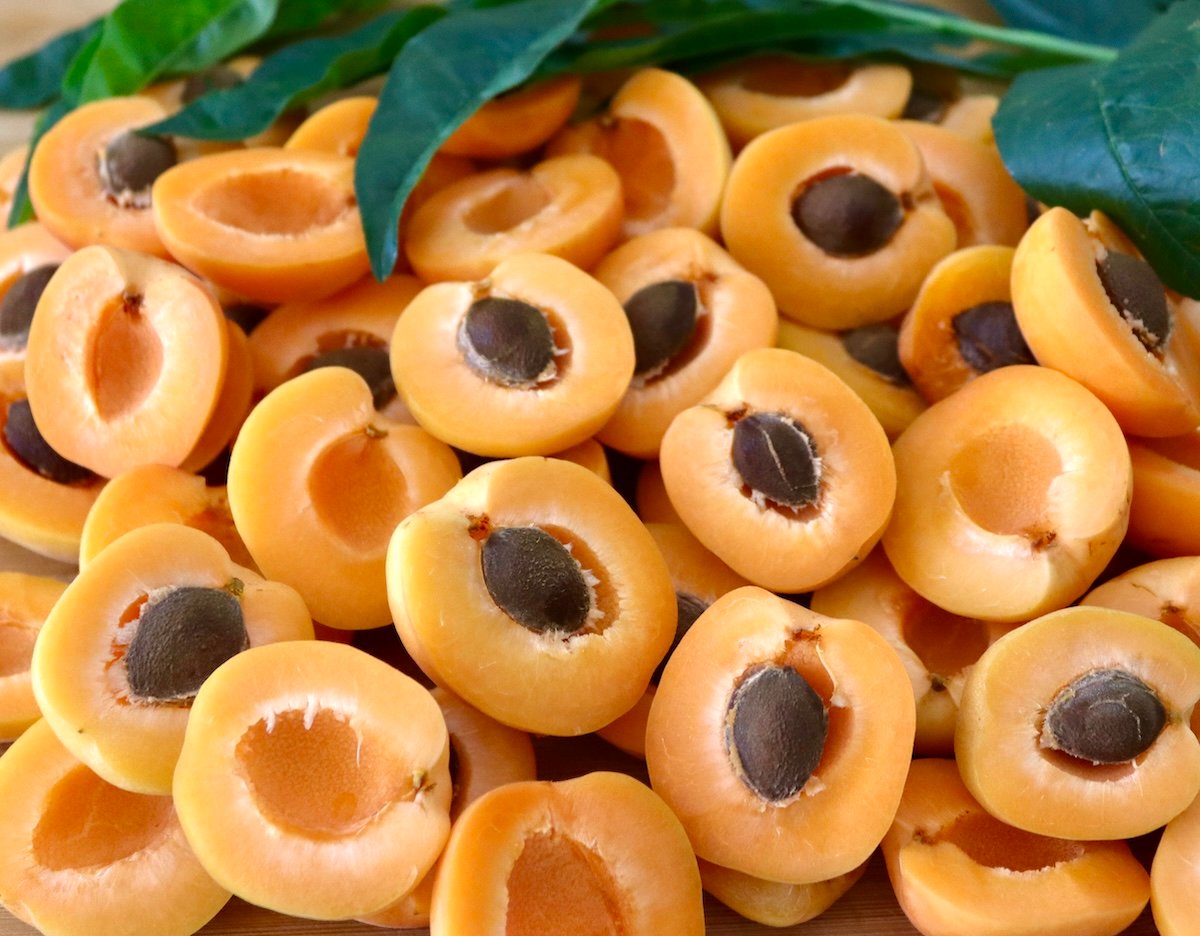
- Add the water and sugar to a large, heavy-bottomed pot (do not use an aluminum or un-coated cast iron pot).
- Heat just until the sugar has dissolved and then add half of the cut apricots and simmer for 30 minutes, stirring every 10 minutes or so.
- Add the remaining half of the cut apricots and simmer until soft, about another 30 to 45 minutes, again, stirring from time to time.

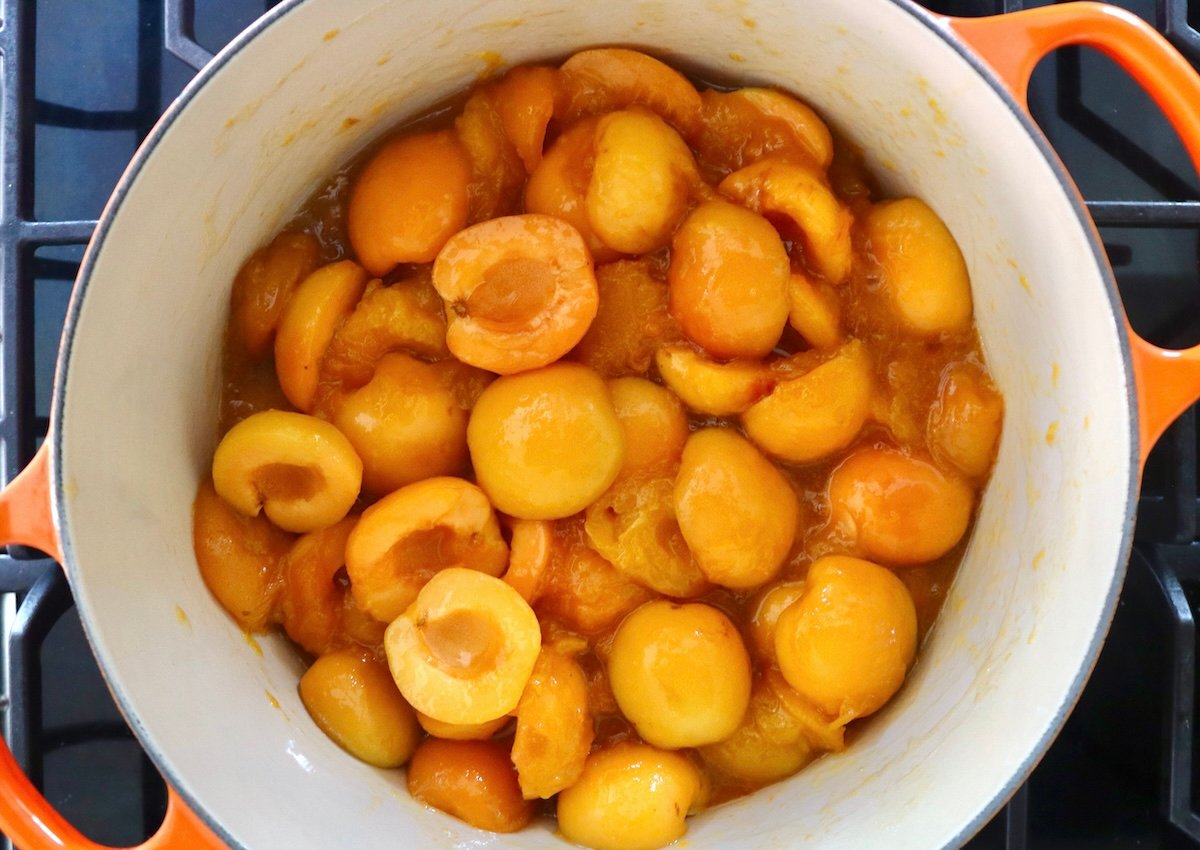
- Let the preserves cool completely in the pot before storing.
Recipe Tip: In my method for making preserves, I add half of the fruit at the beginning, and half midway through the cooking process. This way, some of the fruit is very soft, and some is a bit more firm. I love the variation in texture -- particularly with apricot preserves. If you'd like all the apricots to be the same texture, add them all in the beginning and cook to the desired softness.
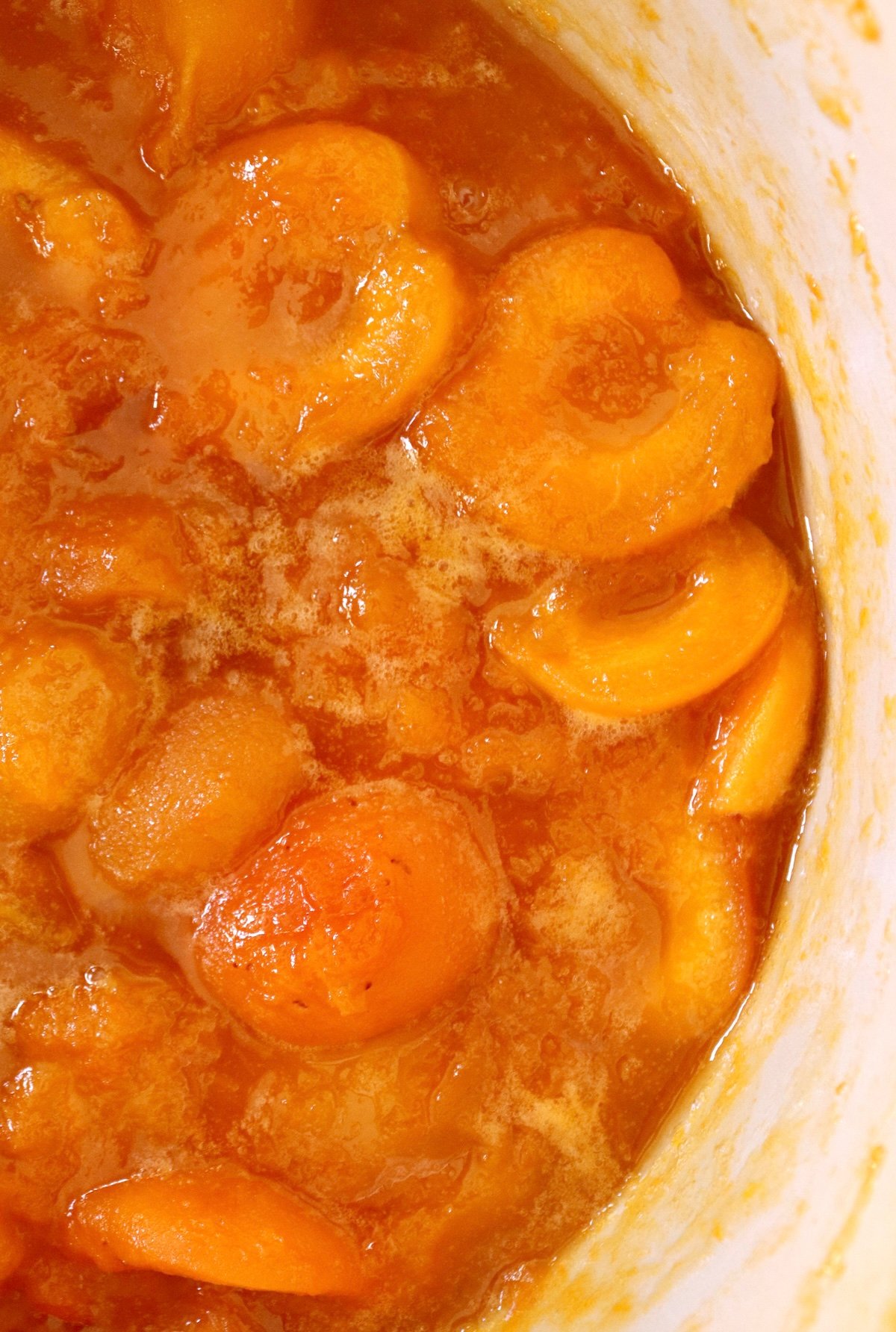
How is my preserves recipe different from others?
- Low sugar preserves. My recipe only calls for 1 ¼ cups of sugar for 3 ½-pounds of fruit. This is very little compared to a more standard ratio, which is typically 2:1 (fruit to sugar) or even 1:1. The sugar isn't just for sweetness -- it also helps the preserves gel. The amount of natural pectin in the fruit -- which also helps it gel -- will also influence how much sugar you need. While apricots are not particularly high in pectin, I find that this lower amount of sugar I use does the trick.
- No acid. Preserves almost always contain some form of acid, like lemon juice. The acid helps activate the pectin in the fruit and helps it last longer. Since this is a small batch recipe meant to be used within few weeks, I find it doesn't need it. However, if you're making a larger quantity for canning, you should definitely add about 1 tablespoon of lemon juice per pound of fruit . (See Storing Preserves below.)
Variations
- Add fresh herbs. Basil pairs beautifully with apricots. Add a handful of roughly chopped, washed basil leaves at the beginning of the recipe, with the sugar and water. Oregano and thyme would also be lovely. For the amount of fruit in this recipe, add about 2 cups lightly packed herbs.
- Add vanilla or almond extract. Vanilla will add a lovely subtle flavor, while almond extract is more pronounced, and pairs superbly with fresh apricots.
- Try other fruits. This method also works with other stone fruits and strawberries. Peaches, plums and nectarines would all work well. Cooking times will vary.
Serving Suggestions

- Breakfast. Apricot preserves is fantastic with a little butter (or not) on toast, bagels, croissants, etc. I especially love it with a spread of Ricotta or Burrata cheese on toast. And it's delicious served with all sorts of hard cheeses as well. It's amazing with Manchego!
- Dinner. I think it's fabulous served with pork chops or grilled chicken.
- Dessert. You can glaze cake layers with it, serve it on ice cream, or make a crumble, crisp or fruit cobbler with it.
Storing Preserves
- Small batch. My recipe is more or less a small batch, so I don't sterilize jars. I just store it in tightly sealed jars in the refrigerator to have at the ready. It will keep well this way for at least 3 weeks (if it even lasts that long).
- Larger quantities. If you make preserves with more that 4 pounds of fresh fruit, you will likely want to can it so it lasts longer. This is a very good guide for sterilizing jars for proper canning. Unopened, they will last this way for up to a year. (You should also be sure to add an acid to the preserves, like lemon juice -- 1 tablespoon per pound of fruit -- for larger batches.)
Preserves vs. Jam vs. Jelly vs. Marmalade
- Preserves- Preserves contain whole or large chunks of fresh fruit.
- Jam - The fruit in jams are puréed, and the texture is quite thick.
- Jelly - Jelly is made from fruit juice only, and is typically clear and smooth.
- Marmalade - Marmalade is made with citrus fruit -- pulp and juice, and often the peels too.
More Must-Try Preserves (and Marmalade)
Other Scrumptious Recipes with Apricots
- Upside Down Carrot Cake with Apricot Glaze
- Minty Apricot and Strawberry Dessert
- Apricot Chicken with Olives
- Apricot Glazed Carrots
I hope you find my apricot preserves to be just as incredible as I found Aimée's grandmother's to be!
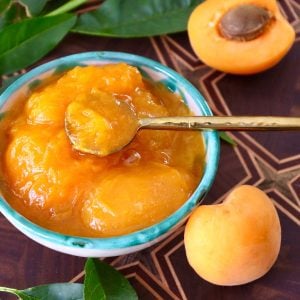
Apricot Preserves Recipe
Equipment
- 4 to 5 quart Dutch Oven (or similar)
Ingredients
- 3½ pounds fresh apricots
- ½ cup water
- 1 cup granulated sugar
Instructions
- Gently wash the apricots, slice them in half and remove the pits.
- Add the water and sugar to a large, heavy-bottomed pot (do not use an aluminum or un-coated cast iron pot).
- Heat just until the sugar has dissolved and then add half of the cut apricots and simmer for 30 minutes, stirring every 10 minutes or so. Add the remaining half of the cut apricots and simmer until soft, about another 30 to 45 minutes, again, stirring from time to time.
NOTES
NUTRITION


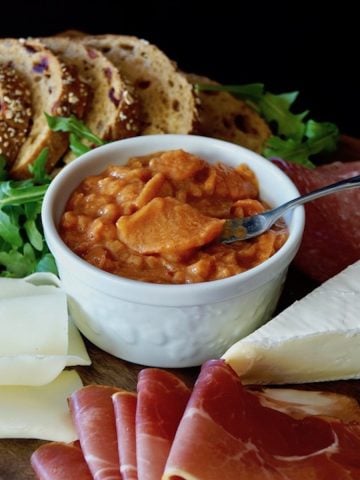
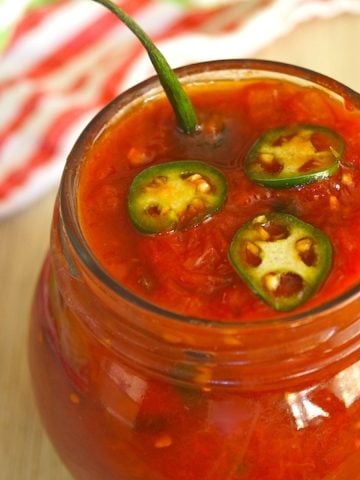
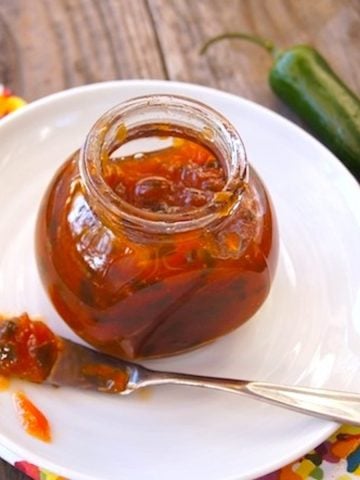

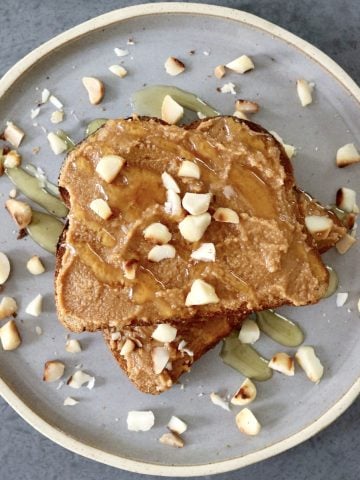
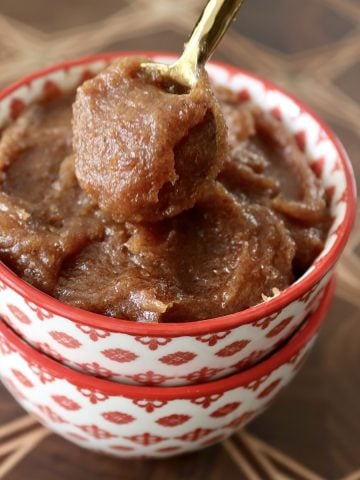
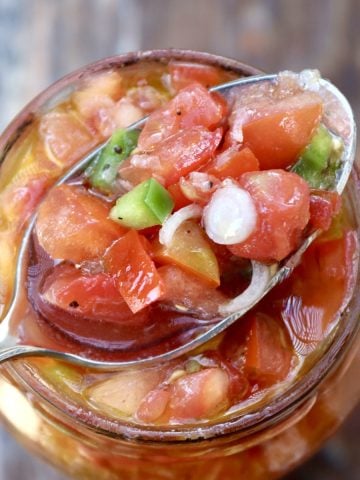
David Scott Allen
Those preserves look insanely good. I missed apricot season in Tucson but they are readily available in t4eh natural grocery stores -- I must try this! It would make an amazing apricot tart!
Valentina
Indeed it would make a delicious tart. I eat it by the spoonful. Really. Thanks, David. 🙂 ~Valentina
Raymund | angsarap.net
Growing up in the Philippines, we only ever had the canned stuff, so I didn’t realise how amazing real apricot preserves could be until much later. This recipe took me back, the texture and flavour reminds me of the first time I tried a homemade version, and wow, what a difference!
Valentina
Thanks so much. I love that this recipes makes you think of the first time you tried apricot preserves. Enjoy! 🙂 ~Valentina